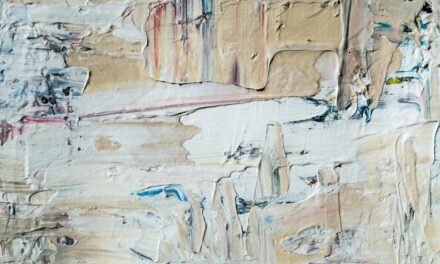Negative space, often overlooked in the realm of sculpture, plays a crucial role in the overall composition and perception of three-dimensional art. At its core, negative space refers to the area surrounding and between the subjects of an artwork. In sculpture, this can mean the voids and gaps that exist around and within the physical form.
While the positive space is the material that constitutes the sculpture itself, negative space is equally important as it defines and enhances the positive forms. This interplay creates a dynamic relationship that can evoke various emotions and interpretations from the viewer. The concept of negative space is not merely a technical consideration; it is an essential aspect of visual storytelling.
Sculptors often manipulate negative space to guide the viewer’s eye, create balance, and establish a sense of movement within their work. For instance, a sculpture with intricate cut-outs or voids can invite the observer to engage with the piece from multiple angles, revealing new perspectives and interpretations with each shift in viewpoint. This engagement transforms the experience of viewing sculpture into an active dialogue between the artwork and the observer, where both positive and negative spaces contribute to the narrative.
Summary
- Negative space in sculpture refers to the space around and between the subject, which is just as important as the subject itself.
- Utilizing negative space in 3D art can create a sense of balance, harmony, and depth within the artwork.
- The importance of negative space in sculpture lies in its ability to define and enhance the form and structure of the artwork.
- Negative space is a crucial design element in 3D work, as it can influence the overall composition and visual impact of the piece.
- Exploring the relationship between positive and negative space in sculpture can lead to dynamic and thought-provoking artworks.
Utilizing Negative Space in 3D Art
The Power of Voids
For example, a sculptor might design a piece that appears solid at first glance but reveals intricate voids upon closer inspection. These voids not only serve to lighten the visual weight of the sculpture but also invite contemplation about what is absent, prompting viewers to consider the significance of absence in relation to presence.
Challenging Perceptions
Moreover, negative space can be a powerful tool for abstraction in 3D art. By focusing on the spaces between forms rather than the forms themselves, artists can challenge traditional perceptions of sculpture. This approach encourages viewers to engage with the artwork on a conceptual level, as they are invited to fill in the gaps with their imagination.
A Canvas for Emotional Expression
The absence of material can evoke feelings of emptiness or freedom, depending on how it is presented. Thus, negative space becomes a canvas for emotional expression, allowing artists to convey complex ideas through simplicity.
The Importance of Negative Space in Sculpture
The importance of negative space in sculpture cannot be overstated; it is fundamental to achieving balance and harmony within a piece. A well-considered use of negative space can enhance the overall aesthetic appeal of a sculpture, drawing attention to its positive forms while simultaneously creating a sense of unity. When sculptors neglect negative space, their work may appear heavy or cluttered, lacking the necessary breathing room that allows each element to shine.
Conversely, when negative space is thoughtfully integrated, it can transform a sculpture into a cohesive whole that resonates with viewers. Furthermore, negative space serves as a narrative device within sculpture. It can suggest movement, tension, or even emotion by creating contrasts between filled and empty areas.
For instance, a sculpture that features expansive negative spaces may evoke feelings of isolation or longing, while one with tightly packed forms might convey energy and dynamism. This narrative potential allows artists to communicate complex themes without relying solely on representational forms, making negative space an invaluable aspect of sculptural practice.
Negative Space as a Design Element in 3D Work
Incorporating negative space as a design element in 3D work requires a keen understanding of composition and spatial relationships. Artists must consider how each element interacts with both positive and negative spaces to create a harmonious balance. This involves not only the physical arrangement of materials but also an awareness of how light interacts with these spaces.
Shadows cast by positive forms can enhance the perception of negative spaces, adding depth and dimension to the overall composition.
By deliberately creating voids or gaps within a sculpture, artists can draw attention to specific areas or themes they wish to highlight.
This technique encourages viewers to explore the relationship between what is present and what is absent, fostering a deeper engagement with the artwork. As such, negative space becomes not just an afterthought but an integral part of the design process that shapes the viewer’s experience.
Exploring the Relationship Between Positive and Negative Space in Sculpture
The relationship between positive and negative space in sculpture is akin to a dance; each element influences and defines the other. Positive space provides form and structure, while negative space offers context and meaning. This interplay creates a dialogue that enriches the viewer’s understanding of the artwork.
For instance, a sculpture that features bold, protruding forms may be complemented by expansive negative spaces that allow those forms to breathe and resonate within their environment. This relationship also extends beyond mere aesthetics; it can influence how viewers interpret the work on an emotional level. A sculpture with tightly packed positive forms surrounded by minimal negative space may evoke feelings of confinement or chaos, while one with generous voids may inspire thoughts of freedom or contemplation.
By thoughtfully considering this relationship, sculptors can craft pieces that not only captivate visually but also resonate on a deeper emotional plane.
Techniques for Incorporating Negative Space in 3D Art
Creating Cut-Outs and Voids
One effective technique is to create cut-outs or voids within solid forms, permitting light and air to flow through the sculpture. This approach not only enhances visual interest but also invites viewers to engage with the piece from multiple angles.
Experimenting with Transparency
Additionally, sculptors can experiment with varying levels of transparency by utilising materials such as glass or mesh, which can create intriguing contrasts between positive and negative spaces. Another technique involves manipulating scale and proportion to emphasise negative space. By juxtaposing large forms with smaller voids or vice versa, artists can create tension and intrigue within their work.
Harnessing the Power of Negative Space
This contrast encourages viewers to explore the relationship between filled and empty areas, prompting them to consider what lies beyond the physical form. Ultimately, these techniques allow artists to harness the power of negative space as an essential component of their creative expression.
Negative Space in Sculpture: Historical and Contemporary Perspectives
Historically, the concept of negative space has been present in various artistic movements but has often been overshadowed by a focus on positive forms. In classical sculpture, for instance, artists like Michelangelo and Bernini paid meticulous attention to detail in their positive forms while often neglecting the surrounding spaces. However, as art evolved through movements such as Modernism and Minimalism, artists began to recognise the significance of negative space as an integral part of their practice.
Contemporary sculptors have embraced this understanding, using negative space as a primary element in their work. Artists like Richard Serra and Anish Kapoor have created monumental pieces that challenge traditional notions of form by emphasising voids and gaps within their sculptures. This shift reflects a broader trend in contemporary art that values conceptual exploration over mere representation, allowing for a richer dialogue between positive and negative spaces.
The Impact of Negative Space on the Viewer’s Experience in 3D Art
The impact of negative space on the viewer’s experience in 3D art is profound and multifaceted. When viewers encounter sculptures that thoughtfully incorporate negative spaces, they are often compelled to engage more deeply with the work. The presence of voids invites contemplation; viewers may find themselves pondering what is absent as much as what is present.
This active engagement transforms passive observation into an immersive experience where individuals are encouraged to explore their interpretations. Moreover, negative space can evoke emotional responses that enhance the overall experience of viewing sculpture. A piece that features expansive voids may inspire feelings of serenity or introspection, while one with tightly packed forms might elicit sensations of tension or urgency.
By understanding how negative space influences perception and emotion, artists can create works that resonate powerfully with audiences, fostering connections that extend beyond mere visual appreciation. In conclusion, negative space is an essential element in sculpture that enriches both artistic practice and viewer experience. By understanding its significance and employing various techniques to incorporate it into their work, sculptors can create pieces that resonate on multiple levels—visually, emotionally, and conceptually.
As we continue to explore this dynamic interplay between positive and negative spaces, we uncover new dimensions of meaning within three-dimensional art that challenge our perceptions and invite us into deeper dialogues with each piece we encounter.
If you are interested in exploring the concept of negative space in art further, you may want to read about the painting “The Triumph of Death” by Pieter Brueghel the Elder. This masterpiece is a great example of how artists use empty spaces to create depth and meaning in their work. To learn more about this fascinating painting, check out this article.



